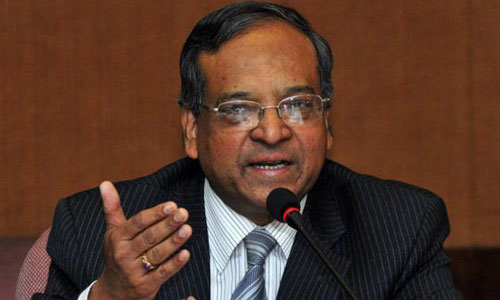
An overcautious year ahead for real estate sector-II
The office market is likely to observe steady demand, especially in prime locations in leading cities like NCR, Mumbai and Bengaluru.

The office market is likely to observe steady demand, especially in prime locations in leading cities like NCR, Mumbai and Bengaluru.

Replicating global trends, the Indian economy is looking towards an impending slowdown in growth due to decline in consumption expenditure, repeated hikes in interest rates and consistently high inflation.

The country’s competition regulator is planning to initiate an investigation next week to find whether the practices for which it fined DLF Rs.630 crore on Tuesday are the norm at other real estate companies too.

It has always been axiomatic that when financial institutions raise their lending rates, there are bound to be ripples on the highly cost-sensitive Indian real estate market.

Real estate traditionally has always had the perception of being a sector where ‘land & buildings’ was the language required and ‘people skills’ were of no great relevance. But, now, even big Real estate players are soon beginning to understand the importance of effective ‘client servicing’, enhanced ‘team productivity’ and professional ‘managerial skills’.

With a predominant demography that grew up without money, the very subject of money is interlinked to the deep-rooted anxiety and insecurity of Indians. This is why a vast majority of us more often than fail to differentiate between saving & investing. For us, saving money is eqaul to investments, and safety & cushion of money is at the top of the mind. The fact of the matter is that saving gives the returns at a base rate that is lower than the inflation rate. This erodes the purchase power of money. A bank Fixed Deposit (FD) of INR 1 lakh might look fancy at INR1.7 lakh next year, but the appreciated amount can not purchase today what you could have purchased with that amount last year.

Affordable housing is witness to degrowth at a time when luxury housing is on a roll. A perception has hence gained ground that the higher interest rates in the range of 8.5-9% is what is the bottleneck for the buyers. However, the fence sitting buyers across the country, more so in the affordable segment, don’t think so. They rather cite the empirical evidence when the housing market was on a roll even when the interest rates were in double digit.

Evaluation of the real estate brands has never been as challenging in India as it is now. After all, the large & listed real estate developers across the country are exhibiting identical patterns with their performance. Nearly all of them are witness to their best-ever fiscal topline as well as stock performance. The combined market share, fiscal performance and market cap of some 20-0dd listed real estate companies would be more than half the revenue of Indian real estate.

Call it influence peddling of the real estate stakeholders, or a thought-process that is culturally ingrained in the minds of the Indians, but the collective consciousness is made to believe that real estate investments are insulated against losses. Track2Realty questions the rationale. Real estate as an asset class has been oversold with the promise that you can never suffer losses with a physical asset, unlike stocks and mutual funds where an investor can suffer huge losses. To top it all, there is a general belief that real estate offers the best Return on Investment (ROI).

Some of the English dailies had come up with marvellous marketing idea, as they called it then, of barter deals which they thought was a win-win for both the media houses as well as the builders. They got into a barter deal where builder got crores of advertising space with the publication without a single rupee exchanging hands. In such deals, the media houses instead of advertising revenue got that much exchange value of property in the upcoming projects of these builders. Property supplements were launched by the mainline newspapers that violated all ethics of journalism to glorify the builders and their projects. Such was the clout of these builders that they even interfered in the editorial policies of these newspapers. They felt empowered & free to label the news copy and the journalists as negative, if they didn’t like a news item.
